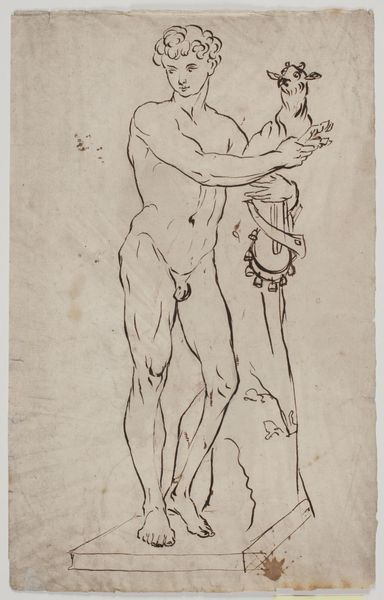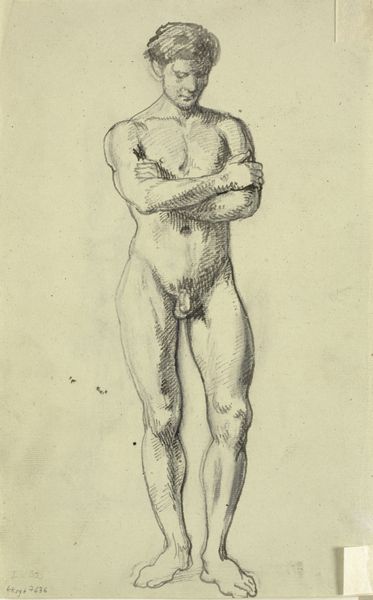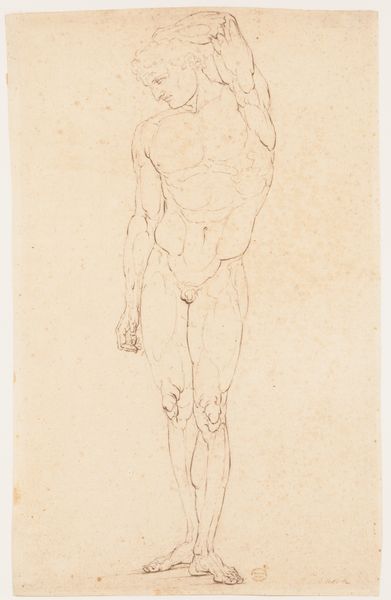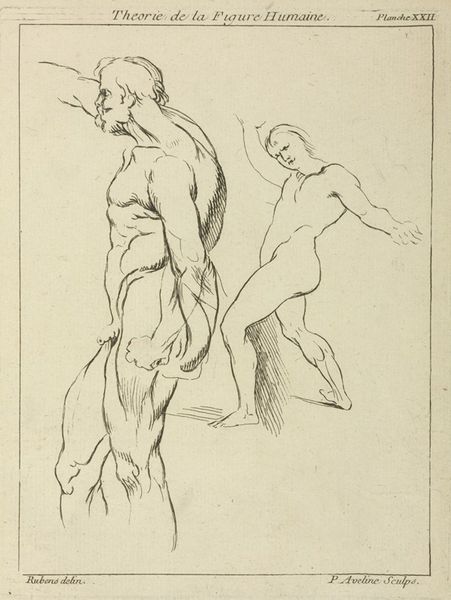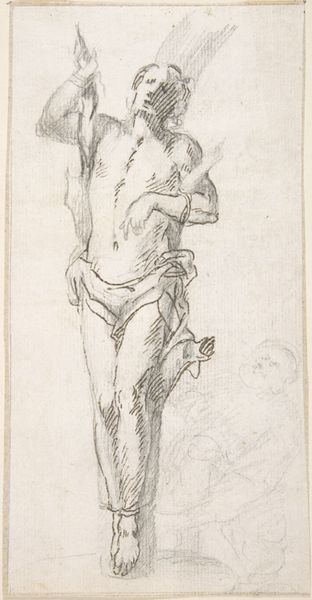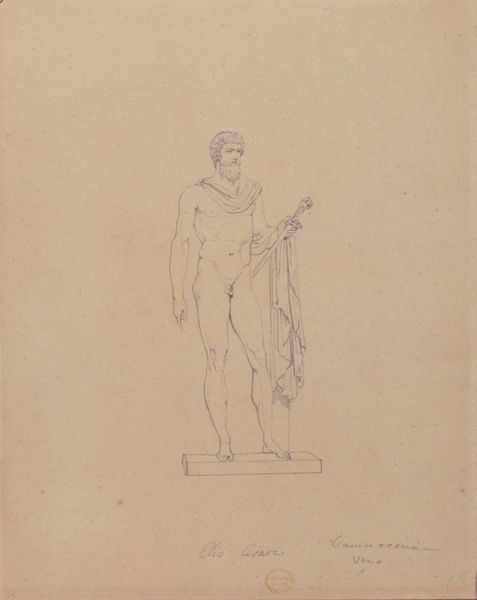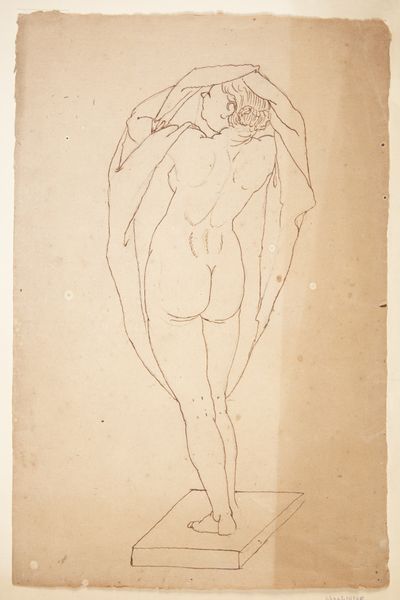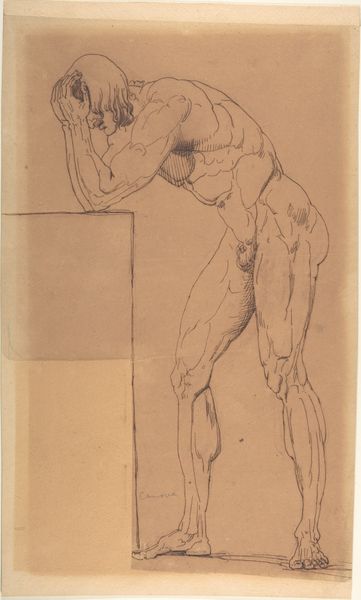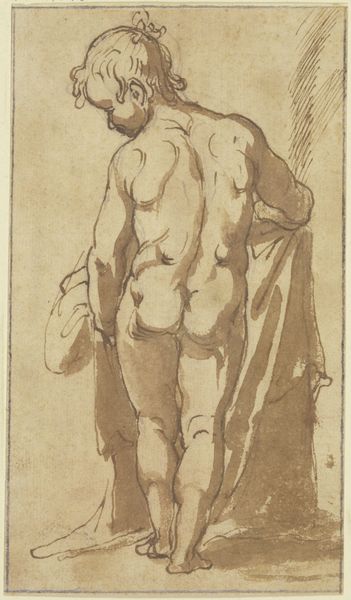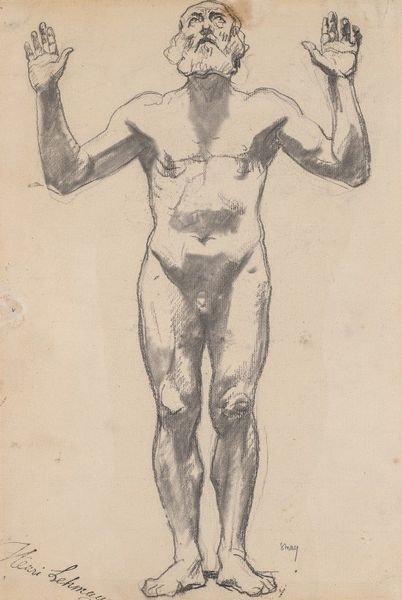
drawing, pen
#
portrait
#
drawing
#
imaginative character sketch
#
light pencil work
#
quirky sketch
#
classical-realism
#
figuration
#
personal sketchbook
#
idea generation sketch
#
sketchwork
#
character sketch
#
sketchbook drawing
#
pen
#
history-painting
#
academic-art
#
sketchbook art
#
initial sketch
Dimensions: height 132 mm, width 80 mm
Copyright: Rijks Museum: Open Domain
Curator: It has a slightly mournful quality to it. There's a tiredness in the subject's posture despite his clear muscular physique. Editor: You've zeroed in on an interesting observation. We're looking at "Hercules met attributen", a drawing attributed to Isaac Weissenbruch. While the exact dating is somewhat broad, it's believed to have been created sometime between 1836 and 1912. Currently, it resides in the Rijksmuseum. Curator: The line work is really fascinating. It looks as though he was workshopping the hero's design, maybe an idea generation for a much bigger and far more impressive work. Pen and ink would give you the control to quickly make sketches and ideations. Editor: That speaks to the crucial role these types of sketches had on academic art during this era. It showcases Weissenbruch’s engagement with classical ideals, right? Curator: Yes! Think of the context around that era; to be an excellent artist required mastery in both drawing and understanding ancient masterpieces of art. It allowed artists to create in both realistic and imaginative genres. This process created works that could easily resonate in social contexts of the time period. Editor: And this also indicates Weissenbruch’s investment in a particular image of masculinity, right? Hercules, beyond just being a hero, was a symbol of strength, resilience, and even virtue – values often upheld and certainly scrutinized within 19th-century social structures. Curator: I agree. There is a potential commentary on social expectations. But it looks also like that he enjoyed experimenting with Hercules. The line qualities are not perfectly even; they suggest he was focused on what he can achieve with a single sheet of paper rather than committing to flawless artistry. Editor: Well, I think that contrast, the unfinished quality alongside the monumental subject matter, it forces us to confront the complex layers inherent in image production, historical ideals and maybe even the socio-political function that art played during that period. Curator: A thought-provoking reminder that every stroke carries cultural weight, and we can re-evaluate conventional materials through their interaction within societal conditions. Editor: Absolutely, this single drawing offers much more than a glimpse into one artist’s sketchbook. It unveils art’s function and power in the nineteenth century.
Comments
No comments
Be the first to comment and join the conversation on the ultimate creative platform.
